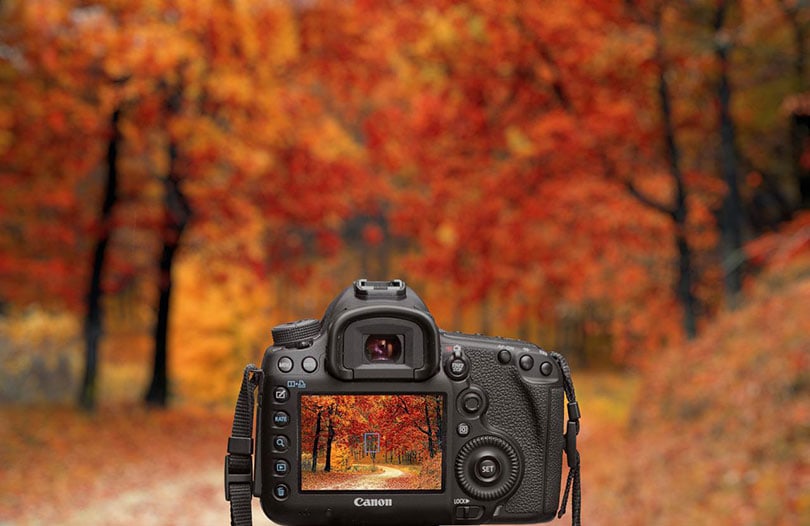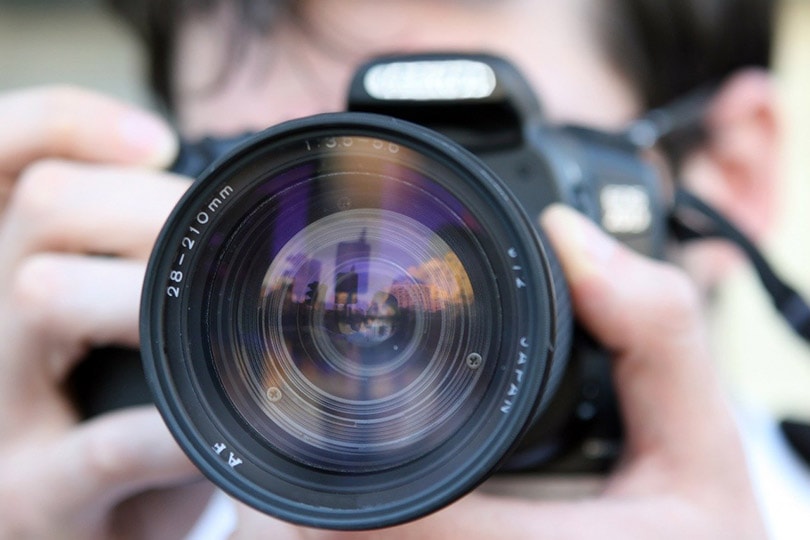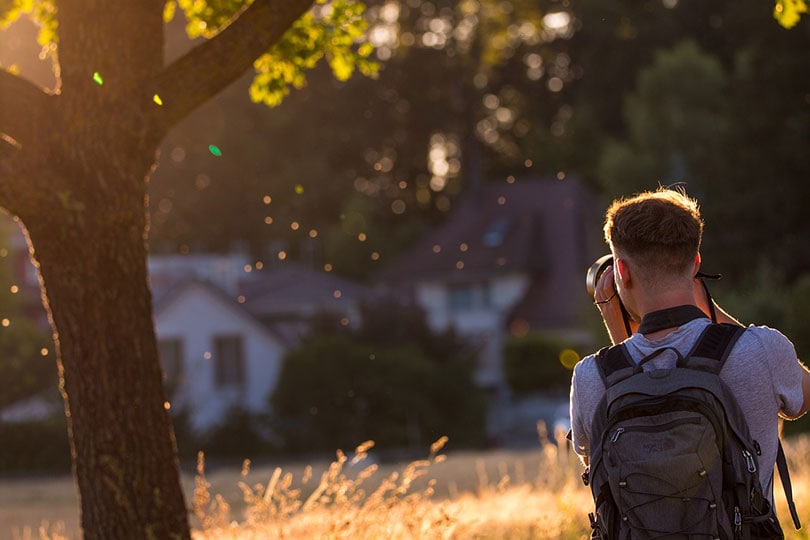What Aperture Do I Use for Landscape Photography?
Last Updated on

Landscape photography is a highly sought-after niche for capturing the dramatic vistas of our beloved planet. If you’re looking to learn what settings make or break a great photo, this guide will go over the essential information you need to get started.
Take notes, run over to your local park, and have your camera ready to take photos so you can see how settings can change the image after making the adjustments.

What Is the Best Aperture Setting for Landscape Photography?
Since the subjects of landscape photography are primarily at a far distance (mountains, sand dunes, plains, etc.), you’ll want as much depth-of-field (DOF) as possible, and you’ll need to get everything in focus.
That’s why the classic f8–f13 range is widely considered to be a good area for landscapes. A lot of lenses perform at their sharpest at f8 since it’s right in the sweet spot when balancing DOF and diffraction. Yet, it depends on your lens and its maximum aperture.
Keep in mind that with extreme aperture levels, such as f22, there is a high chance that your lens will suffer from that diffraction. This is a scenario that makes the image become soft and reduces overall clarity.

Can You Use a Wide Aperture for Landscape Photography?
There are plenty of circumstances that accommodate the use of a wide aperture. However, it must be applied with the intention of procuring the best results.
Nightscapes
During low-light scenes, small apertures like f13 won’t collect enough information to see anything in the picture without boosting ISO to extremes. If you’ve picked up a recent mirrorless body with great ISO performance, this might be easier to get around. However, it’s still unlikely you’ll reach f8 or f13, which is why a fast f-stop will be advantageous. When you shoot the stars or milky-way in the background, f4 or lower will be adequate for a bright picture.
Close Subjects
If your goal is to frame shots of nearby trees or macro-landscapes, a fast aperture is a perfect way to ensure that you can separate the background from the subject.
Drawbacks
The main problem with large apertures is that they have a shallow DOF which limits you to shooting close subjects. It may also force you to focus stack or take multiple photos of the foreground, mid-ground, and background in different areas of focus.

Is Aperture Priority Good for Landscapes?
In a constantly changing environment, aperture priority can be a good fit for those who need fast adjustments to the dynamic lighting. This is great for forests that have many changes in light while you move around. Clouds are another factor that completely changes the brightness of an image. However, it’s usually best to use manual apertures if you are in a predictable setting to get the exact DOF you need. It can be essential if you are switching to wildlife photography as well.

Conclusion
Generally, landscape photography requires you to prioritize an aperture that will keep the entire image sharp. It’s possible that your conditions or equipment are limited, but you should aim to use as many different apertures as you can.
We recommend the range of f8–f13, as those are considered the fundamental f-stops for landscapes. Although, it all depends on the place you’re in and the conditions provided, as well as your creative preference. Hopefully, you gained valuable information that will improve your photos, and we think you should get out there to try these tips yourself!
Featured Image Credit: flutie8211, Pixabay
About the Author Robert Sparks
Robert’s obsession with all things optical started early in life, when his optician father would bring home prototypes for Robert to play with. Nowadays, Robert is dedicated to helping others find the right optics for their needs. His hobbies include astronomy, astrophysics, and model building. Originally from Newark, NJ, he resides in Santa Fe, New Mexico, where the nighttime skies are filled with glittering stars.
Related Articles:
What Is the Best Binocular Magnification for Hunting? Optical Features Explained
Can You Use Binoculars to Look At Stars? How to Choose the Right Pair
How to Clean a Refractor Telescope: Step-by-Step Guide
How to Clean a Telescope Eyepiece: Step-by-Step Guide
How to Clean a Rifle Scope: 8 Expert Tips
Monocular vs Telescope: Differences Explained (With Pictures)
What Is a Monocular Used For? 8 Common Functions
How to Clean a Telescope Mirror: 8 Expert Tips
